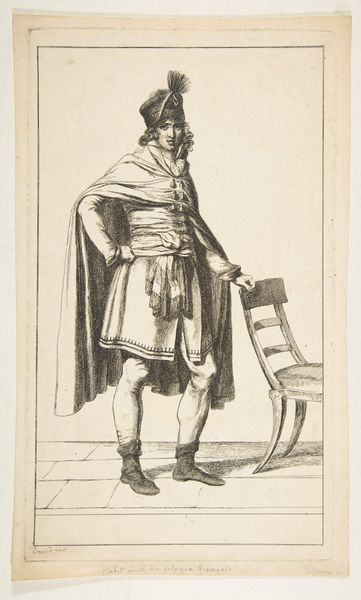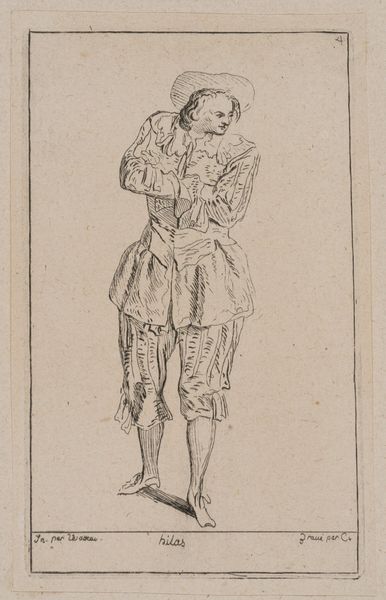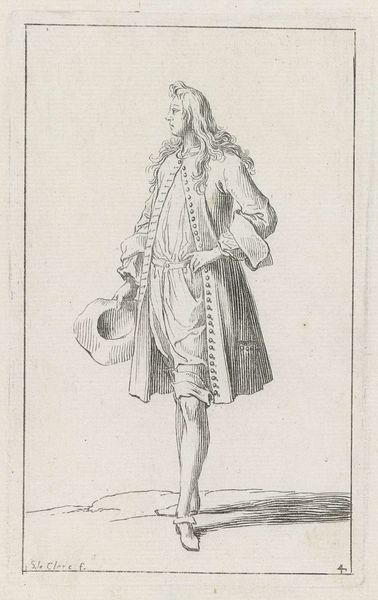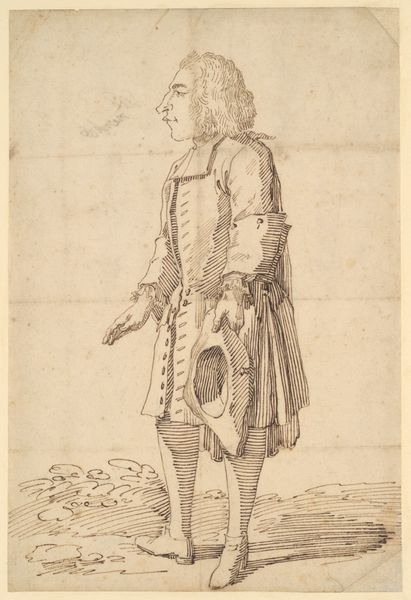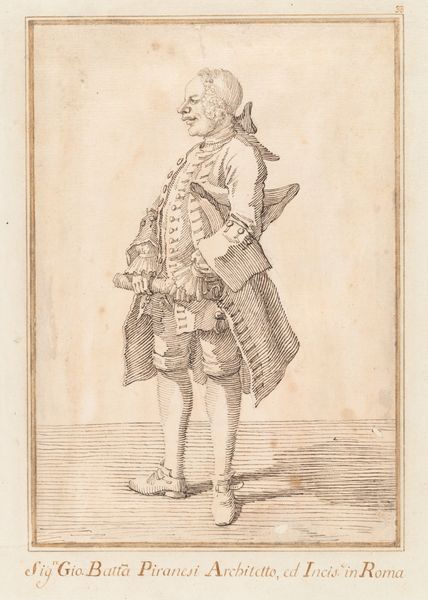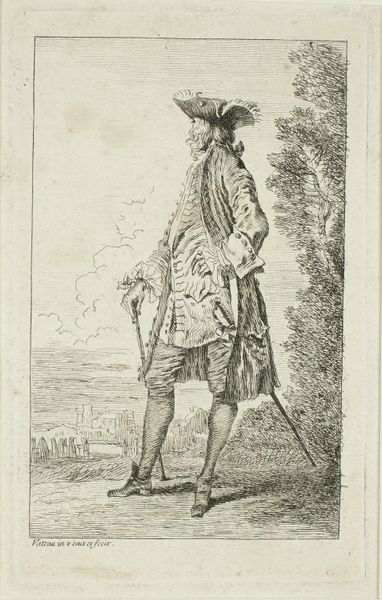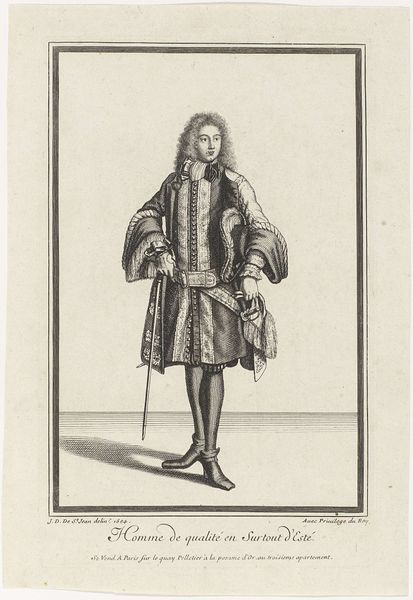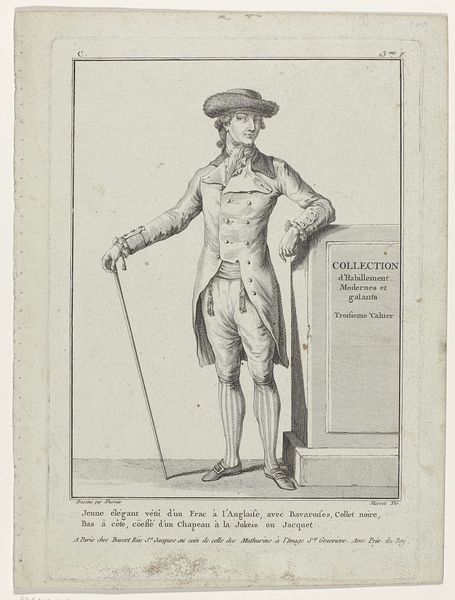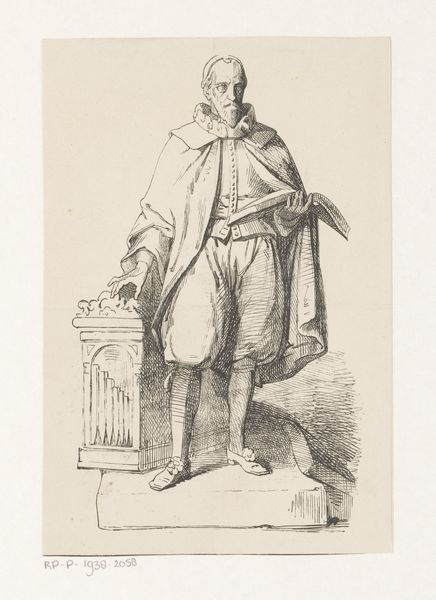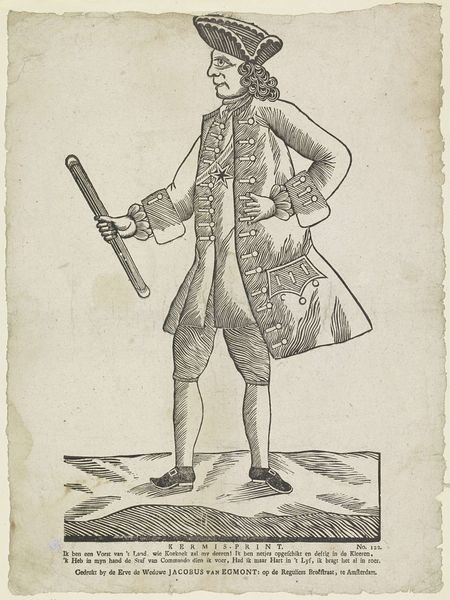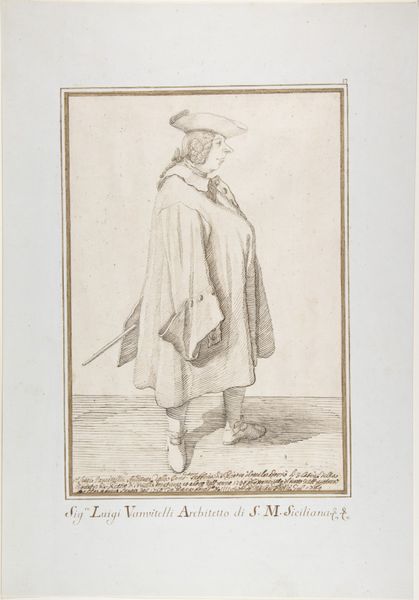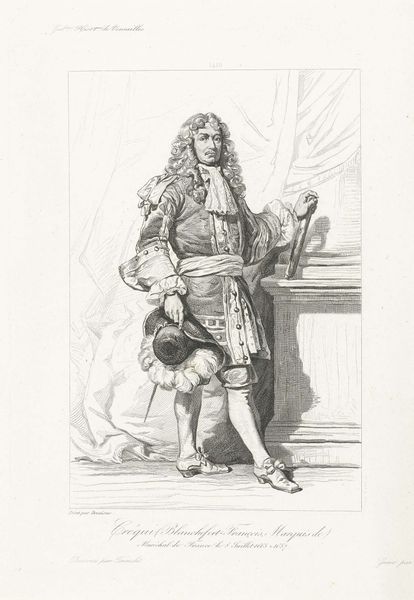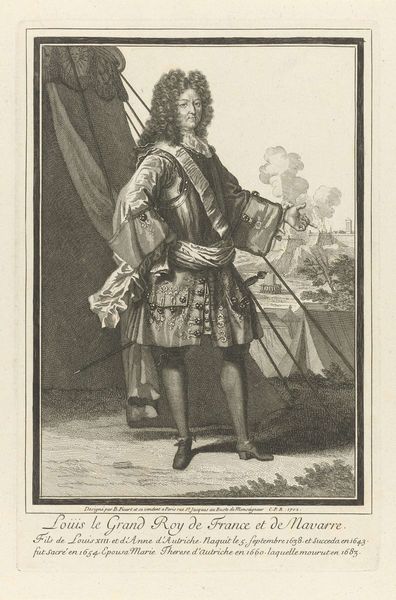
drawing, print
#
portrait
#
drawing
#
neoclacissism
# print
#
history-painting
Dimensions: image: 12 x 6 7/8 in. (30.5 x 17.5 cm) plate: 13 7/16 x 8 1/4 in. (34.2 x 21 cm) sheet: 15 3/4 x 9 9/16 in. (40 x 24.3 cm)
Copyright: Public Domain
Curator: Let’s discuss "Civil Garb of the French Citizen," a print crafted by Jacques-Louis David around 1794. It is currently part of the collection at the Metropolitan Museum of Art. Editor: My initial impression is one of muted defiance. The etching feels deliberately austere, even practical, despite the clear indication of wealth. Curator: David, as we know, was deeply embroiled in the French Revolution. The attire isn't simply clothing; it's a declaration, reflecting radical socio-political change after the monarchy's end. What does the material suggest to you about how David conceptualized that change? Editor: Look closely at the relatively rough quality of the line work. It signals that these garments were likely mass-produced or intended to be. These clothes were meant for labor, for practicality in daily tasks; consider this against a backdrop of opulent aristocratic fashion! The cap is an eye catcher: a political message encoded in fabrics and cuts. Curator: Exactly, the aesthetic serves a function. Notice the subject’s pose. It’s both assured and accessible. This 'citizen' is actively participating in the new Republic. David is constructing an image of ideal citizen participation, a powerful rhetorical statement about revolutionary identity. Editor: Indeed. And let's not ignore that bare-bones chair, a signifier of everyday existence among austere Neo-Classical lines! Stripped of ornament, focusing on structural integrity. Labor produces form, even here. Curator: How do we square such deliberate artistic decisions within David's role both as artist and as a politically aligned individual, specifically through the Terror? Editor: The line is, as they say, materially fine, curator! Consider Jacques-Louis David, though. Remember, everything including the artist's time and skill came at a literal price within an ever-evolving political and social landscape. Curator: Indeed, thinking about it today, considering issues of production, labor, gender, and political identity, is useful. It emphasizes how costume communicates far more than initially meets the eye. Editor: A society remade—and ready to wear its values in material, however briefly that garment may endure.
Comments
No comments
Be the first to comment and join the conversation on the ultimate creative platform.
